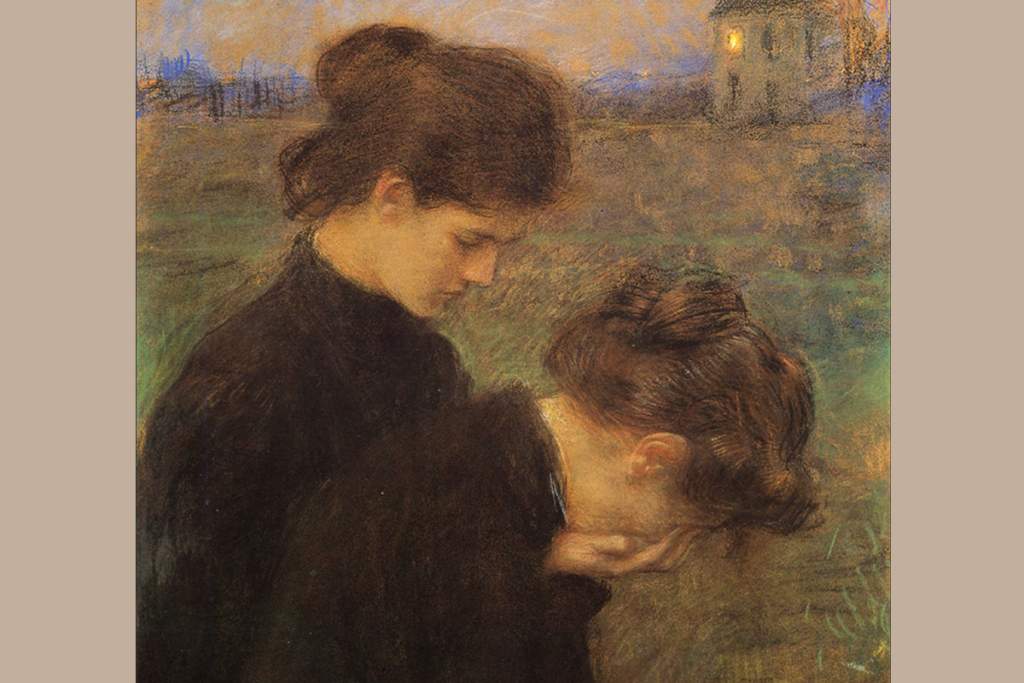Rafael Chávez Torres' Duelo de la Patria and Theodor Axentowicz's Under the Burden of Adversity: a comparison between art and music

Duelo de la Patria is one of Costa Rica’s most important musical works. It is a funeral march composed by Rafael Chávez Torres, director of the country’s military bands, from 1882 on the occasion of the death of President Tomás Guardia and it was premiered at his funeral. The work occupies an essential place in Costa Rican culture. It has been performed every Holy Week during religious processions since the end of the 19th century and at funerals of various personalities. Its fame has crossed borders, as it was performed at the funeral of Alfonso XII in 1885 and it is also part of the repertoire of Holy Week processions in Guatemala.
While I listen to the funeral march, it is impossible not to be moved by its sense of mourning and pain. It is as if each note, with its solemnity, is a sob; a cry. For Rafael Chávez Torres, President Guardia was not only the head of state but also his friend, and his sadness for his death is expressed in this composition. It is enough to see the name “Duelo de la Patria,” the nation’s mourning, to comprehend his intentions. The march expresses prodigiously the feelings that arise at the death of a loved one. However, it is a solemn mourning, which, despite the pain, does not fall into despair. I find this reflected in the strength with which the music appears to surge from minute five onwards and in the changes in tempo and volume of the march.
Listening to this music brings back memories of the many Holy Weeks lived in my native country; in my beloved San Rafael de Heredia parish. Listening to the mournful notes of Duelo de la Patria, memories come to my mind and heart of the processions of the Holy Burial on Good Friday nights; the smell of incense; the popular piety of my people; and the solemn devotion with which the priests used to bring us to contemplate the mystery of the Lord’s death. For instance, I remember the statue of the Lying Christ in the beautiful Holy Sepulcher of our parish, accompanied by the image of the Virgin of Sorrows dressed in black clothes, just like the black cope of the parish priest with his dark birretta. I also remember my grandfather, a marching band musician, at whose funeral these marches were played.
How many times do we try to ignore grief? It is as if, in this materialistic and consumerist world, the idea of death should be eradicated. And yet, the certainty of dying is the only thing we are assured of at birth. It is incredible how Rafael Chávez Torres could arouse such deep feelings in the human heart through the musical notes of a march even without the need for words. Perhaps this element is what I admire most about Duelo de la Patria: there is no need for words to express the pain.

There is a painting I came across some time ago that I immediately related to this funeral march: Under the Burden of Misery, by the Polish painter Teodor Axentowicz. Following the spirit of its time, the painting expresses the same feelings that Duelo de la Patria evokes through music. As in Chávez Torres’ march, tragedy and solemnity go hand in hand. Just as the musician plays with notes and tempo to produce a profound sensation within the listener, the painter uses light, brushstrokes, and color to emphasize pain.
The painting and the funeral march touch on the difficult, but no less critical, subject of death. This reality will be important in the works of various authors of the late nineteenth century and during the twentieth century, both in the fine and performing arts, as well as in philosophy. As believers, the way we approach death is full of hope, and I believe that both works can help us become sensitive to the pain of those who grieve.



